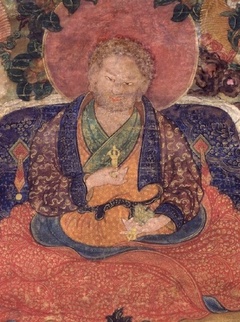Taking the Practice to Heart
How to Take the Practice to Heart
by Jetsün Drakpa Gyaltsen
Namo ratna gurave!
With the fortune of having acquired freedom and advantage,
With the trust that comes from fear of birth and death,
With the devotion of assiduously following instructions,
Child of bright intelligence, keep the following in mind!
To take the practice to heart,
Please exercise great determination,
Forgo attachment, dwell in the mountains,
And forsake this life’s concerns.
To develop qualities within your being,
Please keep the threefold vows and commitments pure,
Minimize arrogance and conceit,
And show the utmost respect to all.
To receive the blessings of the foremost one,
Please conceive of him as an actual buddha,[1]
Take his life of liberation as your model,
And devote yourself to constant prayer.
Please avoid conceptualizing the view,
Determine that appearances are mind,
Neither reject saṃsāra nor pursue nirvāṇa,
And let the agent be purified in basic space.
Please avoid becoming fixated in meditation,
Do away with attachment to bliss and clarity,
Capture the natural state wherein the root is cut,
And go beyond expression and thought.
Please avoid the conduct of adoption and avoidance,
Allow dualistic conceptions to dissolve by themselves,
Regard the eight preoccupations as equal,
And eschew the ‘remedies’ of positive thoughts.
Please do not hope for fruition at some time hereafter,
But let realization manifest,
Merge meditation with post-meditation,
And let the compulsion to practice fade.
To bring about the welfare of other beings,
Please let the force of aspiration run its course,
And the interdependence of causes and conditions arise,
As you master great, non-referential compassion.
This short song of eightfold request
Was sung for one of bright intelligence.
Ensure in this way that it proves significant.
Persevere in meditation until it does.
Samāptam iti.[2]
| Translated by Adam Pearcey on the basis of Jamyang Khyentse Chökyi Lodrö's commentary, 2021.
Bibliography
Tibetan Edition
grags pa rgyal mtshan. gsung 'bum dpe bsdur ma/_grags pa rgyal mtshan/. BDRC W2DB4569. 5 vols. Pe cin: krung go'i bod rig pa dpe skrun khang, 2007. Vol. 5: 350–351
Other Primary Source
'jam dbyangs chos kyi blo gros, "rje btsun rin po che grags pa rgyal mtshan gyis mdzad pa'i sgrub pa nyams su len tshul/" in ’jam dbyangs chos kyi blo gros kyi gsung ’bum. 12 vols. Bir: Khyentse Labrang, 2012. W1KG12986 Vol. 8: 599–605
Version: 1.1-20211122
-
The Tibetan here is gender neutral. Although we have used the masculine pronoun, this is simply to avoid the awkwardness of repeating "he or she" and "him or her" or resorting to the confusing singular they/them, and should not be construed as prejudicial, exclusivist or misogynist. The majority of gurus in Jetsün Drakpa Gyaltsen's day would have been male, certainly, but there were also some female lamas then, as there are today, even if—alas—all too few. ↩
-
This Sanskrit expression means 'Thus it is complete'. ↩
